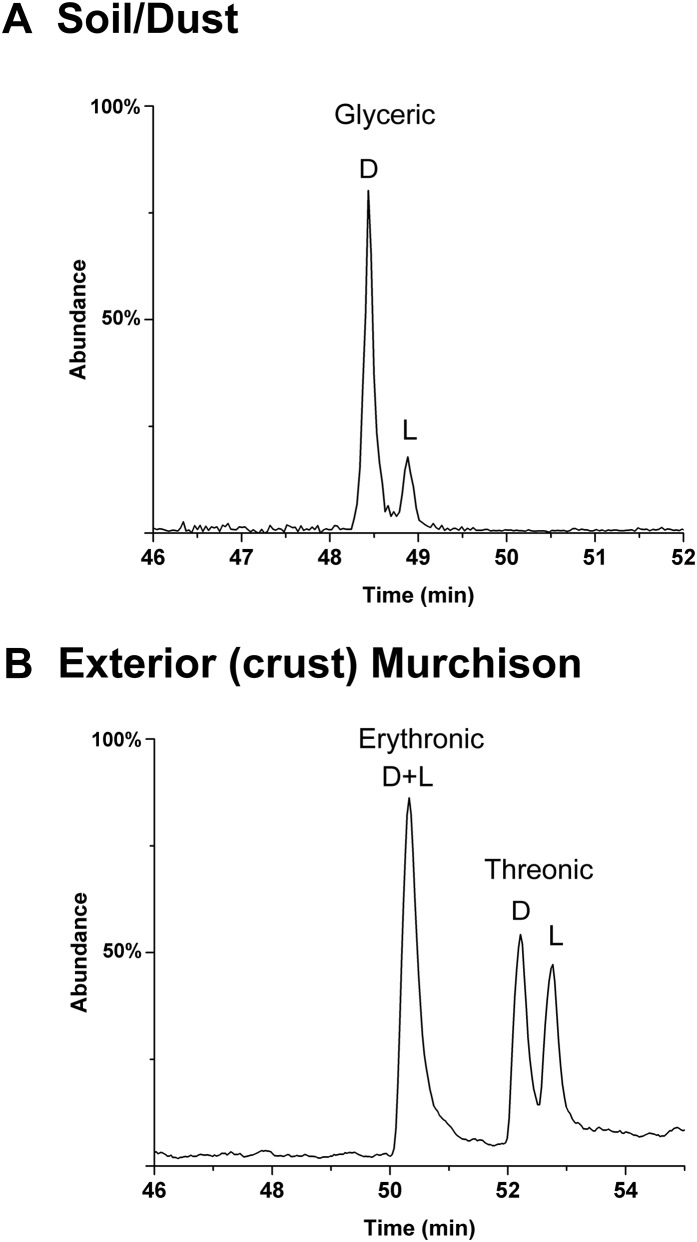Fig. S8.
Additional contamination studies. (A) A typical profile of glyceric acid from water-extracted soil/dust (microorganisms)—as compared with racemic glyceric acid observed in the meteorites of this study. (B) The 4C acids in a known contaminated (crust) sample of Murchison; the GC column did not separate the enantiomers of erythronic acid. There is a significant increase in the l/d ratio of threonic acid relative to that of interior samples and a pristine meteorite such as GRA95229 (Table 1 and Fig. 2): The increase in the l enantiomer can be the result of microbial vitamin C metabolism and/or the result of selective microbial consumption of the d enantiomer as shown by laboratory experiments (Fig. S9).

